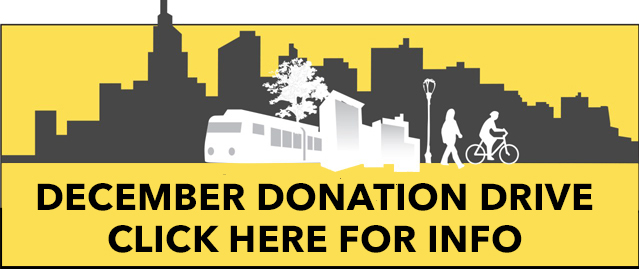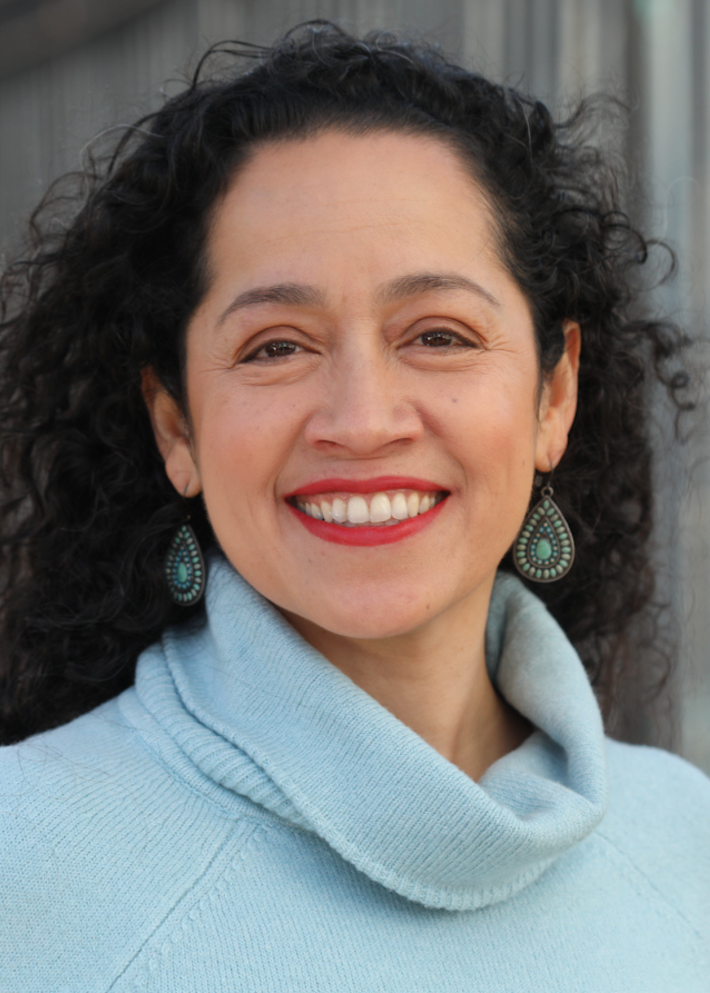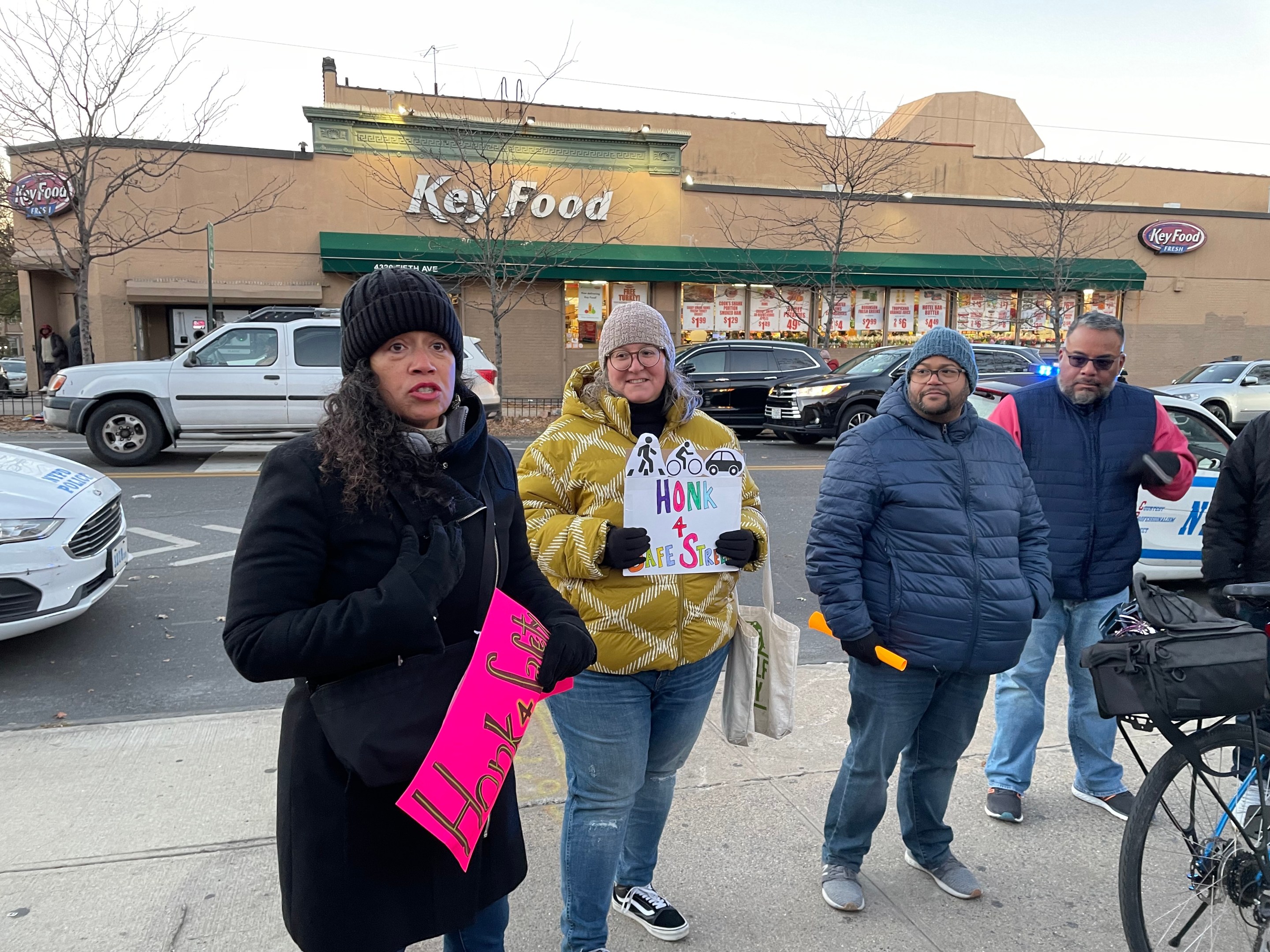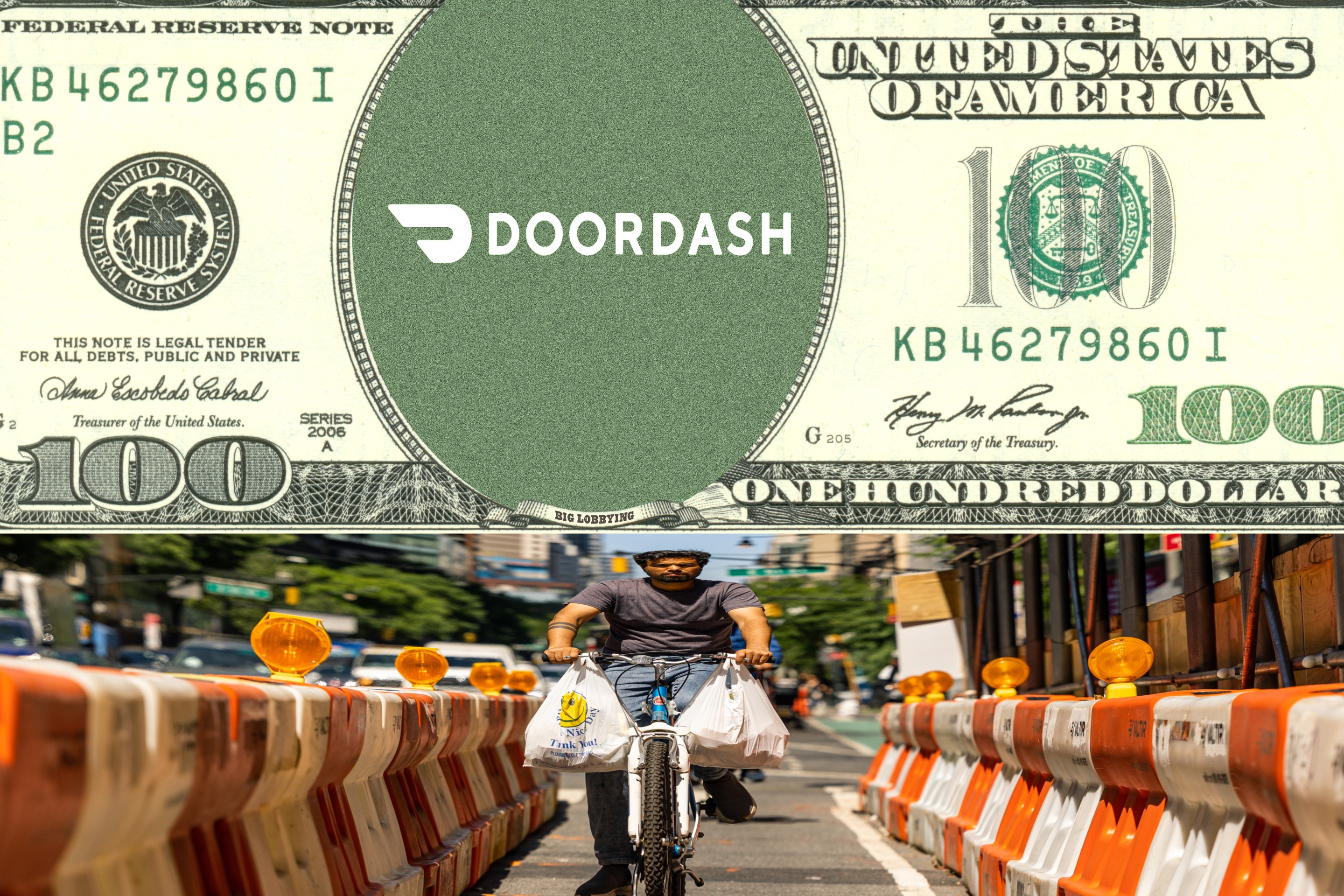
Last year, the Department of Transportation pitched a plan to turn two-way Seventh and Eighth avenues in Sunset Park into one northbound and one southbound street, with traffic-calming measures like protected bike lanes and expanded sidewalks in place to make the avenues more complete streets. The plan was buffeted by a lawsuit, outraged business owners and a lack of local political support and was never implemented. But the agency recently announced that it would restart the effort after a driver crashed into two young girls on Seventh Avenue.
The area's new Council Member Alexa Aviles criticized the DOT's outreach efforts and later said that the city could "do better" than the revised plan for the avenues, which removed the bike lane on Eighth Avenue. Last month, Aviles joined a neighborhood march for World Day of Remembrance for Road Traffic Victims, and then sat down with Streetsblog to explain her vision for how the second attempt should be handled. The following interview was edited for length and for clarity.
Streetsblog: The DOT says that it's totally starting over on Seventh and Eighth avenues, which means that they're also restarting the community outreach process. Before you were elected last year, you said the outreach wasn't done the right way. But as the Council representative for the area, now you have an opportunity to shape what happens. So what do you want to see this time?

Alexa Aviles: What we'd love to see is definitely more robust community engagement. My understanding from the last time was there were some preliminary surveys that were done in partnership with a community-based organization where they got a lot of folks to give some preliminary sentiments around how they felt [about the street]. And I thought that was actually well done, but it kind of tanked from there.
It's a different thing when you ask people to develop a plan with you as a co-partner, as a resident, that centers their experiences and their voice, than when you tell them to respond to a plan dropped down on their lap. We need more full language accessibility. We want to do a business walkthrough with some of the partnering agencies, and we can't get them to bring city employees that speak the language of the business owners. How can we explain to business owners ... if the city doesn't provide materials and native language speakers in Fujianese, Cantonese and Mandarin? There's no engagement there. The expectation is that the city knows this is a Chinese-speaking community. And it requires Fujianese, Cantonese and Mandarin speakers. I don't think that's a high standard, this should be the baseline standard, that when we communicate with folks that we communicate in a language that is accessible to them so they can participate.
So I would love to see partnerships with the local CBOs to do a full engagement with residents. I'd love to see real visioning sessions with residents around the corridor and how they feel and get them to also to understand all the different tools at their disposal. And then see where we get, because I think residents are going to tell you that there's a lot of challenges there, and they feel unsafe, too. And it's a matter of them really kind of helping to shape and drive that process as opposed to a process being imposed on them, which is generally what happens.
In the first plan, the DOT said it invited people in for visioning sessions to talk about how they got around in the neighborhood.
And in the first phase they did that relatively well. But there was a steep decline after that. What happened after that was small meetings with business owners, but not a lot of resident engagement. It has to be consistent. You can't just ask people how they feel about it, and then develop a plan and then say you engaged them the whole time.
We want steady continued accessible engagement throughout the whole process. And I want that for every corridor in our district. I would want that for Third Avenue, I think the residents on Third Avenue can tell you specifically how they engage with the streets, what they see happening on the streets, where they feel safe and unsafe, where the corridors are that children take. I want to see that kind of engagement on every corridor quite frankly, not just in Chinatown, but Chinatown is unique because the language barriers is significant. And it's not just with DOT, it's with every city agency, which is why it's so isolated.
You say you don't want to plan imposed on people. But is there an area where the DOT gets all this feedback, and says, "OK, based on what you've told us, there's speeding here, drivers are making dangerous turns, so these are the tools that we have, and these are the ones we'd like to use here"?
What I'm suggesting is not unique to DOT. This is a citywide issue with any kind of plan that happens at the city level, any land-use plan, any bus redesign. So you have your beginning charettes, you get some feedback, then the technical experts will come in and take all that feedback. And then what will often happen is, what is brought back is brought back under the guise of, "This is what we came up with, give us your feedback." But all the feedback then gets rejected whether it makes sense or not. Often, that's the missing step of the plans that really piss people off.
What I'm asking for, and what I've heard others ask for is, is a different engagement. A deeper engagement, of co-design and planning, where there is real partnership there. ... Because you can bring people to certain places. Sometimes yes, there may be decisions that need to be made in either direction. But people get to a place of compromise, and when they don't, then definitely decisions are going to be made. But I'm asking for a deeper level of engagement.
When the last plan was introduced, people sued and business owners were saying, "You can't do this, our customers park here." But there's a lot times where it's not about the customers, but about the business owner who drives to his or her shop. And you talked about changing car culture at the march, but do we have time to hold everyone's hand and slowly walk them through that? People — their customers — are getting hurt on these roads.
I appreciate the question because the people that are getting hurt are the people that live here. We're always going to be dealing with competing interests. And it runs the risk of being challenged by a more powerful interest. I think that is not unique to this issue or any other. When you push power, it pushes back, and often pushes back with more much more resource and effect. I don't think you change the process because you're afraid of that dynamic. You have to be mindful of it, and continue to center the residents of the area, the safety of people that need to be centered, regardless of whether the business interests have more power and are going to fight back. The powers that be are always going to push back, we are trying to shift a culture and a predominant car culture at that.
We're urgent to make sure we do a process that keeps everyone safe, but also that doesn't harm communities. Every time we tell a community that they don't know what they're doing, and we ignore them we grow a much larger problem. We grow a problem of disaffection with the government, we grow a problem of mistrust and skepticism. We don't address the problems of safety either. So it's not one or the other. We're not saying we're going to move so slow that we just don't care if people die. Nobody's making that mathematics. Unfortunately this isn't a simple calculation. It's relatively complex because there's a lot of human behavior at play. But there's also institutions at play, and in a community of color that has been disempowered all the time, how these things are navigated are important. We can't just say, 'Well, you don't matter because we suddenly have to be urgent now.' It's not a simple navigation in my estimation.
Just a couple of weeks ago, you had a 6-year-old and a 7-year-old girl get hit by a driver who was making a left on Seventh. Have you have you heard anything from constituents, around the neighborhood since then? Are people saying, "Oh, this is more proof that we have to do something about this," or is it just kind of, "Well, accidents happen"?
We hear about accidents every single day. That accident is horrendous. My heart breaks every time I hear of an accident. We get every alert. It's heartbreaking, it shouldn't be that way. We shouldn't be accepting that. I think a dominant culture is, "Yeah, it's New York, that happens." But it shouldn't be normalized. We have to move with urgency and with compassion. Our responsibility is to hold that and work with our community residents who want to make changes and want to do things and figure out if there are things that we can do to mitigate that to end that.
Isn't part of your role in pushing the neighborhood is to point to the crash that happened to these girls and, say, "Why do we put up with this?"
Just one day after Eric Salvitzsky lost his life to traffic violence on 9 Ave,
— NYC Council Member Alexa Avilés (@NYCCouncil38) May 6, 2022
today a deliverista was struck and killed at 4 Ave and 21 St.
What we have on 4 Ave is incomplete. We cannot wait any longer for safe, complete, fully protected infrastructure along 4 Ave. pic.twitter.com/pCi1W0ka2d
To do it in a respectful way. But that's what we have to do, we have to say, the two young people that got hit, the person who got killed on Fourth Avenue, the people who got hit by cars on their bikes near our office. That has to drive us to push DOT to complete their projects, to do the things they said they were going to do that will help bring safety. To get people out of these daylighting zones on Fourth Avenue so that you can see. They said they were going to put bollards there. Never, they've never, appeared despite us saying look, look, look every day. Every day, we ping DOT about all kinds of things, everything from traffic signals that are dangling and don't even work to all these incomplete projects.
They've never completed Fourth Avenue in my estimation. There's still no bollards, every time they pave and repave the street the bike lanes themselves are a hot mess. Don't get me started in the wintertime, there's icy slicks.
My office has been alerted to dangerous ice on the 4th Ave bike lane. We have contacted @NYC_DOT to clear the ice and any obstructions to nearby storm drains.
— NYC Council Member Alexa Avilés (@NYCCouncil38) February 21, 2022
Holiday or no – if you see hazardous conditions, contact my office and we will take immediate action! pic.twitter.com/v5Bn8kYmnC
Ultimately, do you have a policy preference for what goes on on Seventh and Eighth? The original plan that came out last year was pretty ambitious and driven by the safety data and what the DOT heard during its outreach. Do you want bike lanes on each stretch?
I don't have a particular way of how any of it would roll out but I would love to see all the curb extensions be done. They have to also bring in Department of Consumer and Worker Protection and the business owners have got to pull back. The businesses have their merchandise almost in full use of the street.
Obviously, there are a lot of things to figure out with this street, which can get as busy as Times Square. Should this project have value where the top of the pyramid or maybe it's the base — whichever is the one that indicates the most-important thing — that pedestrian safety is the priority here, regardless of what some business owners think about their customers' driving?
Even the change to one-way is going to bring some sanity to that street. So I think between the curb extensions, and just getting traffic moving in one direction on the street, probably begins to mitigate some things.
Yeah, but remember the old DOT project in Park Slope to turn Sixth and Seventh avenues into one-way streets? It got tossed out after people said if you these into one-way streets with no traffic calming, all you're doing is creating like a race track.
Yeah, totally. That's why I think I think the curb extensions on Eighth are important.
So there needs to be some kind of traffic calming done to turn the avenues into one-way streets?
I'm open to that. I don't have an exact plan of how I think it should roll out. It's clear that something need to happen. That's why we brought the DOT Commissioner there.
Commissioner Rodriguez did a walk through today with @alexaforcouncil to discuss transportation concerns in #Brooklyn’s District 38. pic.twitter.com/FmESEyZIH2
— NYC DOT (@NYC_DOT) May 13, 2022
I don't feel like I have the plan. As a community we know the tools we have and the things that will help address some of the the transportation problems of the corridor. I think we need to engage the community and see what is the right sequence from their perspective. And they definitely want safety. It's not that folks are saying, "Oh, no, everything is great." I find that just impossible to believe.






